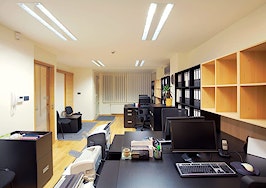As you must know by now if you’ve been reading this column, the Internal Revenue Service recently adopted a massive set of “repair regulations” that, for the first time, establish when an expense for or on property is a currently deductible repair or an improvement that must be depreciated over many years. These regulations go into effect on Jan. 1, 2014. (See “IRS finally provides guidance on building repairs vs. improvements.”)
Our previous four columns covered new “safe harbors” established by the regulations. When these apply, you may currently deduct the cost of an item without worrying whether it is a repair or improvement under the complex regulations. These are the:
- small taxpayer safe harbor (see “Good news for owners of smaller residential rental properties”).
- routine maintenance safe harbor (see “Understanding the new routine maintenance safe harbor for landlords”).
- materials and supplies safe harbor (see “Save big bucks on your taxes by deducting all sorts of weird odds and ends“).
- de minimis expensing safe harbor (see “IRS provides guidance on whether expenses can be deducted instead of depreciated“).
If, God forbid, you can’t utilize any of these safe harbors, you’ll have to look to the main portion of the new regulations to determine how to treat the expense involved. This, to put it mildly, can be difficult.
In this and several future columns we’ll cover how the new regulations attempt to define what is and is not a repair vs. an improvement.
So, put on your seatbelts, here goes.
The basic rule is that an expense must be depreciated if it improves a unit of property. It is currently deductible if it does not rise to the level of an improvement — for example, a repair or routine maintenance. Thus, to know how to classify an expense you must know (1) what the unit of property is, and (2) whether you’ve improved it.
What is the unit of property?
To figure out whether you’ve paid for an improvement, you have to know what piece of property is involved. The IRS calls this the unit of property (UOP). The larger the UOP, the more likely an alteration or addition to it will be a deductible repair rather than an improvement that must be depreciated. For example, if the UOP is an entire building, replacing the fire escapes could be viewed as a repair since it doesn’t seem that significant when compared with the whole building. On the other hand, replacing fire escapes would likely be an improvement if the building’s fire protection system alone was the UOP.
Until now, there has never been a concrete definition of what constituted a unit of property. Building owners often used the entire structure as the UOP, since it resulted in more expenses being classified as repairs. Disputes with the IRS on this issue are common.
One of the biggest changes the regulations make is to define the UOP for rental and business buildings. The regulations do not allow the UOP to be the entire building structure alone. Instead, buildings must be divided up into as many as nine different UOPs: the entire structure and up to eight separate building systems.
This means more costs will have to be classified as improvements, rather than repairs.
UOP No. 1: the entire building
The entire building and its structural components are a single UOP. A building’s structural components include:
- walls, partitions, floors and ceilings, and any permanent coverings on them such as paneling or tiling.
- windows and doors.
- all central air conditioning or heating system components.
- plumbing and plumbing fixtures, such as sinks and bathtubs.
- electric wiring and lighting fixtures.
- chimneys.
- stairs, escalators and elevators.
- sprinkler systems.
- fire escapes.
- other components relating to the operation or maintenance of the building.
- roofs.
UOP Nos. 2-8: building systems
In addition, the following eight building systems are separate UOPs:
- Heating, ventilation and air conditioning (“HVAC”) systems: This includes motors, compressors, boilers, furnace, chillers, pipes, ducts and radiators.
- Plumbing systems: This includes pipes, drains, valves, sinks, bathtubs, toilets, water and sanitary sewer collection equipment, and site utility equipment used to distribute water and waste.
- Electrical systems: This includes wiring, outlets, junction boxes, lighting fixtures and connectors, and site utility equipment used to distribute electricity.
- All escalators
- All elevators
- Fire-protection and alarm systems: These includes sensing devices, computer controls, sprinkler heads, sprinkler mains, associated piping or plumbing, pumps, visual and audible alarms, alarm control panels, heat and smoke detectors, fire escapes, fire doors, emergency exit lighting and signage, and firefighting equipment, such as extinguishers and hoses.
- Security systems: These include window and door locks, security cameras, recorders, monitors, motion detectors, security lighting, alarm systems, entry and access systems, related junction boxes, associated wiring and conduit.
- Gas distribution system: This includes pipes and equipment used to distribute gas to and from the property line and between buildings.
Condominiums
If you own a condominium, the units of property are (1) the individual unit you own and the structural components that are part of it, (2) any portion of the eight building systems defined above that are part of the condominium unit.
When is the unit of property improved?
The new regs also attempt to define what constitutes an improvement to a UOP, instead of a mere repair. They create three broad categories of improvements:
- betterments.
- adaptations.
- restorations.
Together, these form the acronym “BAR,” which is where many landlords and commercial property owners might wish to head right now.
We’ll cover how the regulations define betterments, restorations and adaptations in future columns.
Stephen Fishman is a tax expert, attorney, and author who has published 20 books, including “The Real Estate Agent’s Tax Deduction Guide,” “Working for Yourself,” “Deduct It!,” and “Working with Independent Contractors.” His website can be found at fishmanlawandtaxfiles.com.



